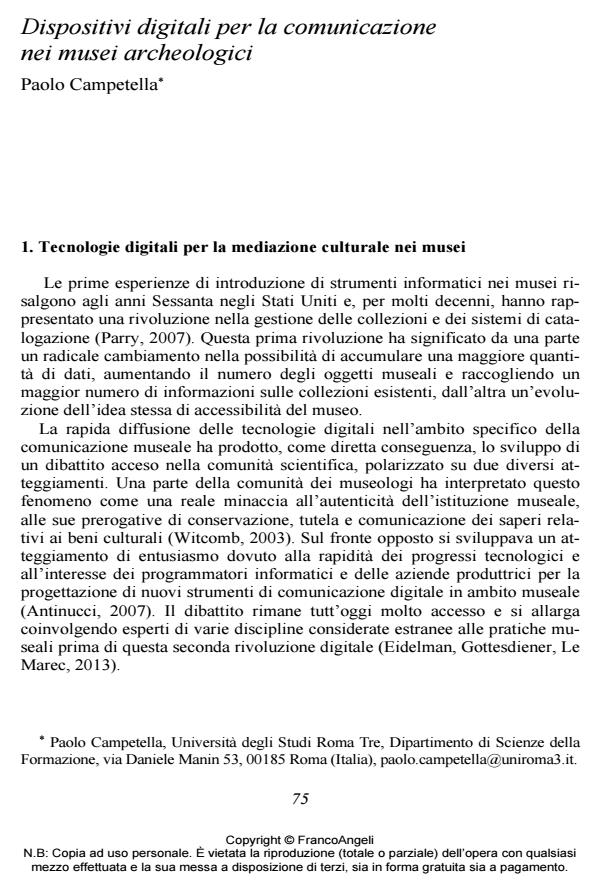Dispositivi digitali per la comunicazione nei musei archeologici
Titolo Rivista CADMO
Autori/Curatori Paolo Campetella
Anno di pubblicazione 2017 Fascicolo 2016/2
Lingua Italiano Numero pagine 16 P. 75-90 Dimensione file 165 KB
DOI 10.3280/CAD2016-002007
Il DOI è il codice a barre della proprietà intellettuale: per saperne di più
clicca qui
Qui sotto puoi vedere in anteprima la prima pagina di questo articolo.
Se questo articolo ti interessa, lo puoi acquistare (e scaricare in formato pdf) seguendo le facili indicazioni per acquistare il download credit. Acquista Download Credits per scaricare questo Articolo in formato PDF

FrancoAngeli è membro della Publishers International Linking Association, Inc (PILA)associazione indipendente e non profit per facilitare (attraverso i servizi tecnologici implementati da CrossRef.org) l’accesso degli studiosi ai contenuti digitali nelle pubblicazioni professionali e scientifiche
The use of digital technologies is widespread in collecting, processing and presenting data derived from archaeological investigations, although it’s not yet clear how much the use of technology has influenced and changed the communications adopted in archaeological exhibitions. The research was aimed to investigate how ICTs are integrated as cultural mediation tools in archaeological museums. An analysis guide, inspired by the communicational model of Pignier and Drouillat (2004) for the analysis of web sites, was applied to two archaeological on site museums: the Grenoble-Saint Laurent Archaeological Museum and the Section dedicated to the Jupiter Temple in the Capitolini Museums. The data analysis identified some indicative characteristics of cultural mediation tools, whether analogue or digital, which could show the application of specific communication strategies. The research offers the possibility to highlight the relationship among devices in the archaeological exhibition to better understand how their integration can affect the meaning making processes of visitors.
Parole chiave:Archeological museum, cultural mediation, ICT, communication strategy, exhibition.
- Vers une communication systématique dans les musées archéologiques. Le rôle des outils numériques : caractéristiques et modèles Paolo Campetella, in Culture & musées /2018 pp.196
DOI: 10.4000/culturemusees.2104
Paolo Campetella, Dispositivi digitali per la comunicazione nei musei archeologici in "CADMO" 2/2016, pp 75-90, DOI: 10.3280/CAD2016-002007